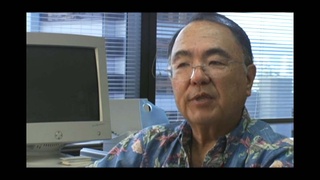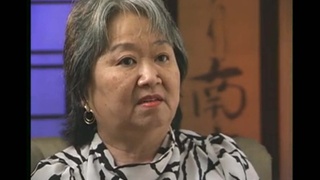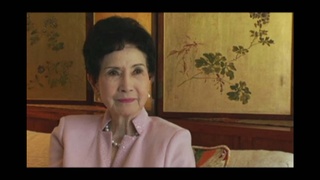Interviews
Brother leaves for war, survival
And at that time, when he came to pick up my brother, my mother never showed tears. She smiled, and she said, “You’re an American now, no matter what. Don’t bring shame on the Oyama family.” And because you grew up without a father, don’t do anything to disgrace the family. “You fight for America, because that’s where you belong.”
And then, after my brother left, I went back to the house, and then I was surprised because […] when I went back to the house, my mother had locked herself in the bedroom and she was just crying her heart out. That’s the part where I admire my mother because she really never showed her weakness because she wanted to be strong for us, growing up without a father. And I think that’s what kept us going.
We were such a close-knit family, you know. And I think that’s the only time I really heard her really cry. And I think once, as a widowed mother, single mother, it must have been tough for her, you know. And once she tried to leave us, and I think she just wanted to get over it. So, a kind neighbor next door, you know, the adults came over to stop her. But, after I got married, I realized how difficult it was during that immigrant period. You know, you’re away from your family in Japan and without relatives to learn to survive on your own.
Date: February 19, 2004
Location: Hawai'i, US
Interviewer: Lisa Itagaki, Krissy Kim
Contributed by: Watase Media Arts Center, Japanese American National Museum.
Explore More Videos

Mixed blood people at camp from a child's point of view
(b. 1934) Writer


Documenting family history for future generations
(b. 1934) Writer

Learning Japanese at school and at home with family
(b.1951) Co-founder and managing director of San Jose Taiko.

Different learning style in Japan and the United States
(1918-2023) Nisei Japanese kabuki dancer


Being an American soldier and an "enemy alien"
(1923-2011) Lawyer, MIS veteran, founder of Francis and Sarah Sogi Foundation


Being accepted as biracial family
(b.1944) Founder of Kobayashi Group, LLC


Thoughts on relationship between Japanese Peruvians and Japanese Americans at Crystal City, Texas
(1937 - 2021) Teacher

Memories of railroad workers who stayed at family's prewar hotel in Spokane, Washington
(b. 1923) Chick sexer


Growing up with Japanese language and values
(1925 - 2018) Nisei educator from Hawai‘i

Father interrogated by FBI, but not taken away
(1925 - 2018) Nisei educator from Hawai‘i
